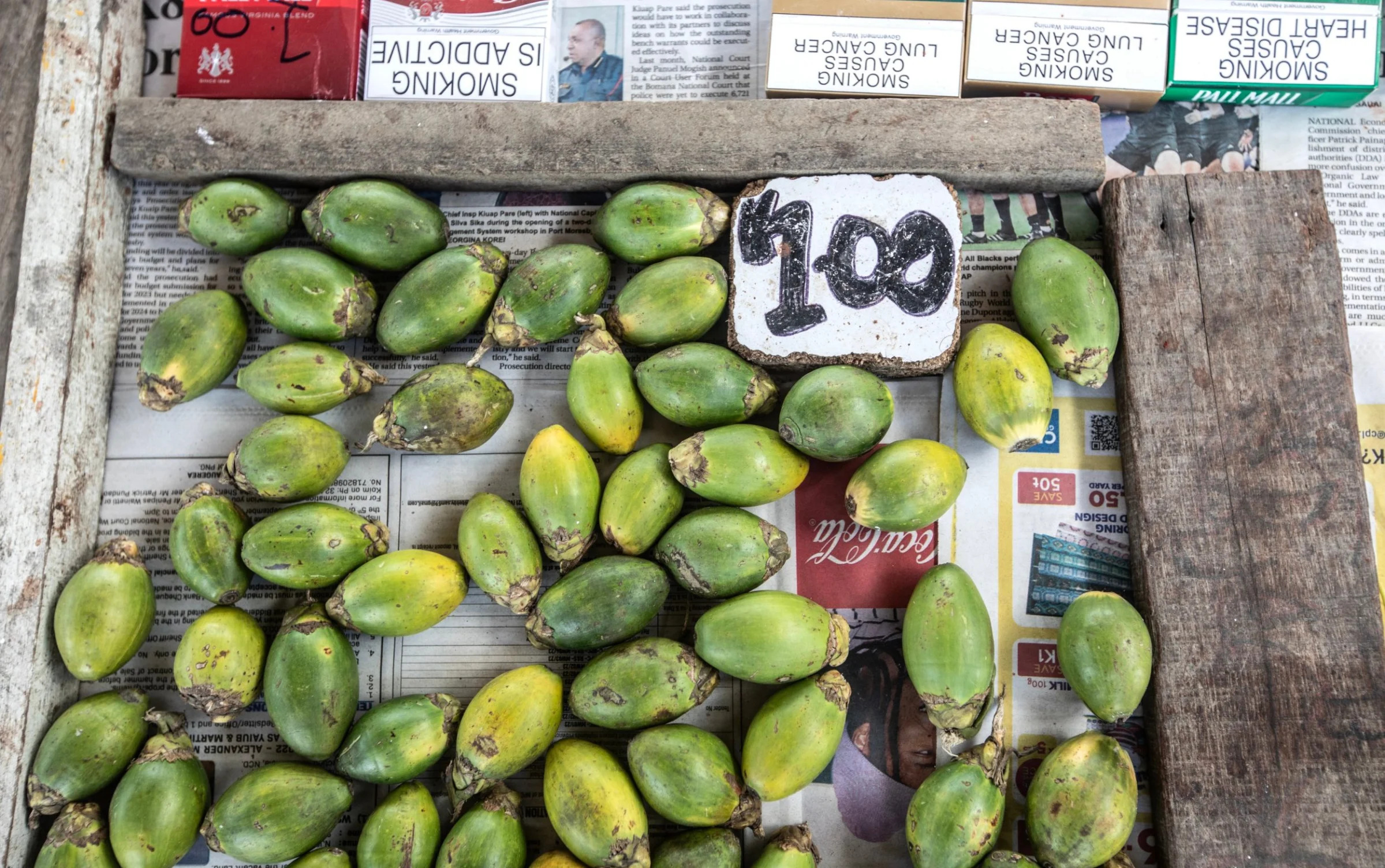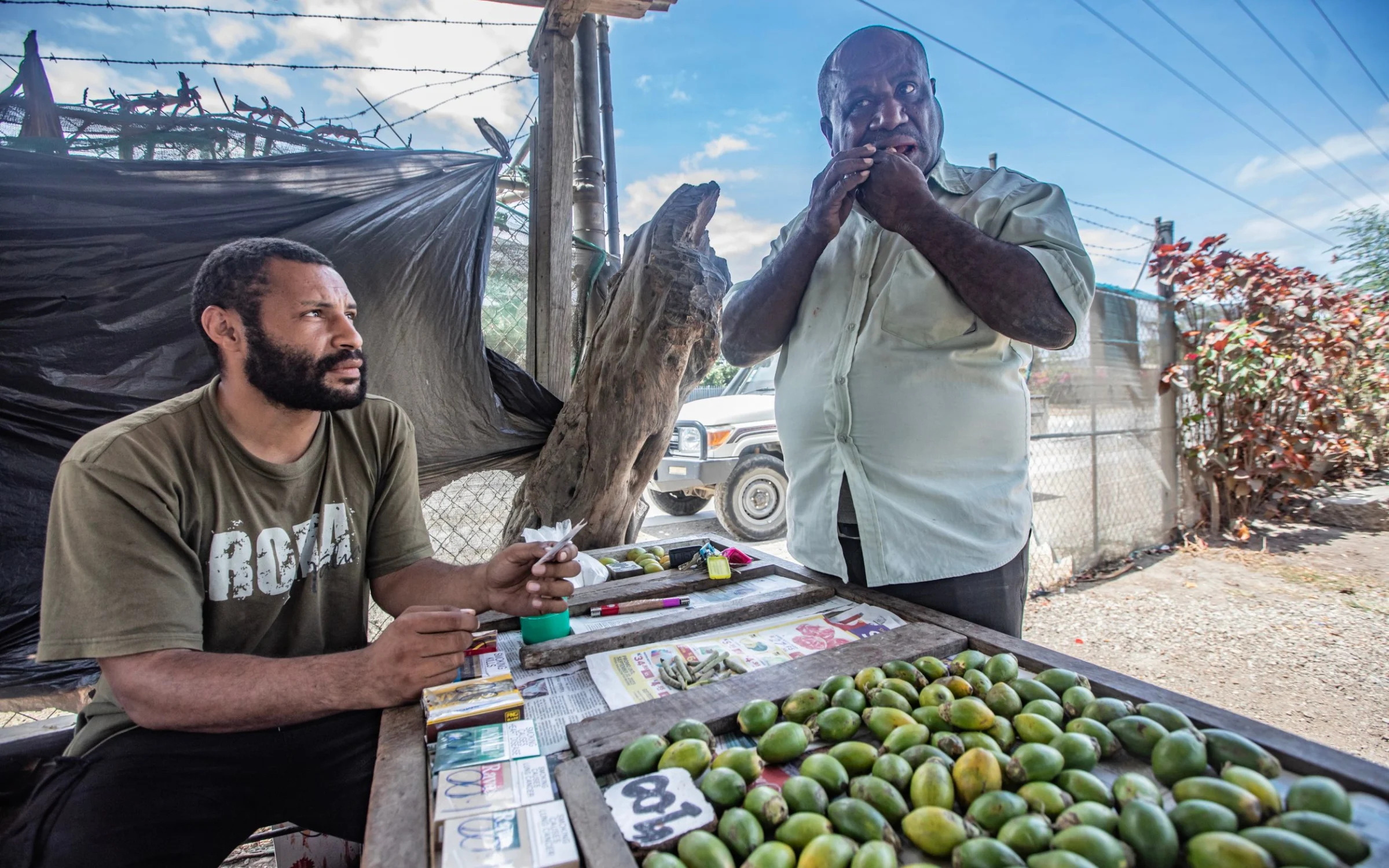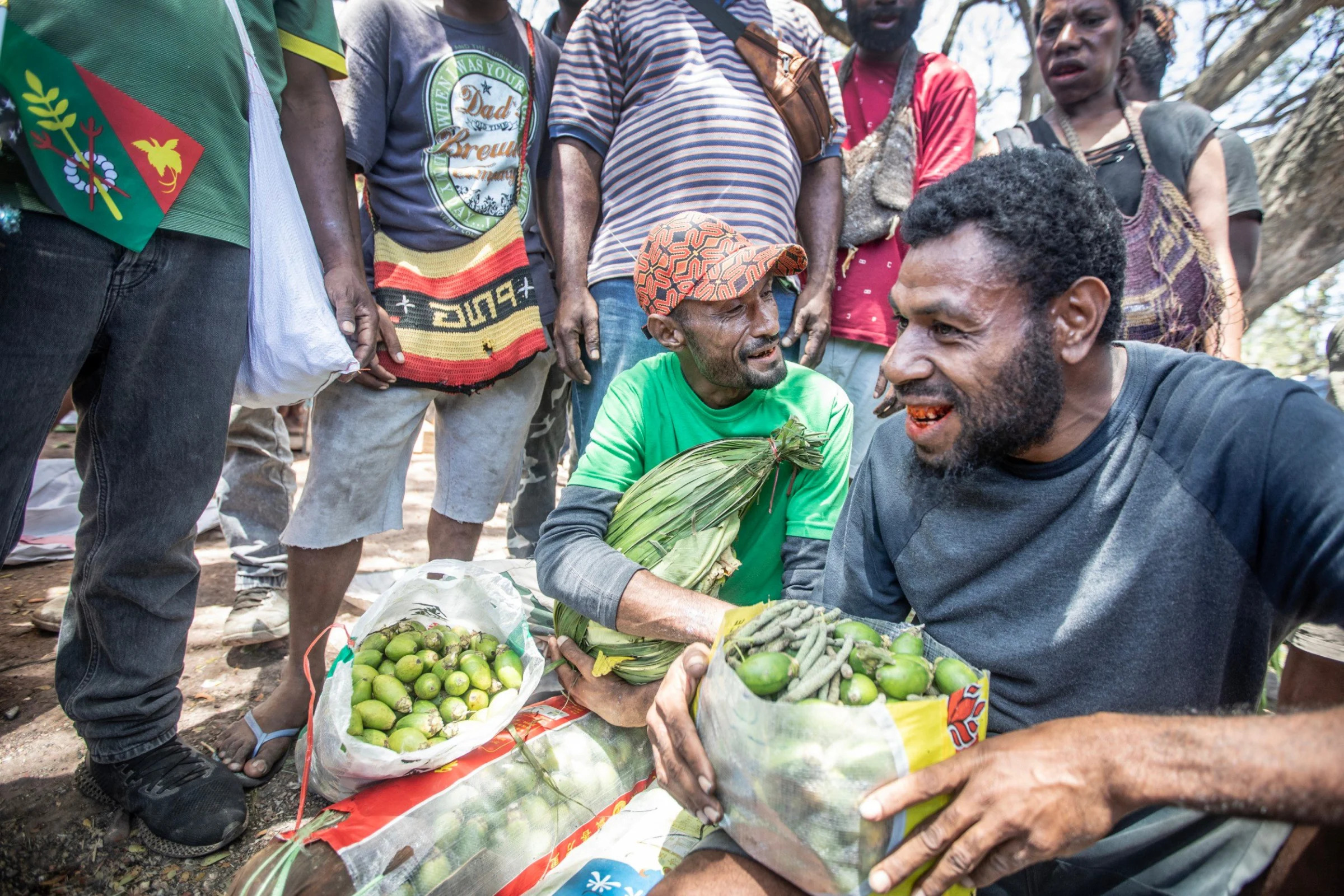This addictive nut is driving record rates of canc
Post# of 128876


David Taim, a civil servant in Port Moresby, the capital of Papua New Guinea, always starts the day in the same way.
He takes a bite of a green, unripe nut, along with the inflorescence of a pepper plant and some white powder mainly made up of slaked lime. Then he chews the mixture.
“It opens your eyes. It makes you awake. It brings your senses to life,” he says.
“Without betel nuts during my office hours, I’m done for the day.”
Betel nut is not very well known in the western world. But this addictive nut, which grows on the areca palm, is regarded as the world’s fourth most widely-used psychoactive substance after caffeine, nicotine and alcohol.

According to oft-quoted but uncertain estimates, 600 million people – including Taim – regularly chew it. That global production of the nut has more than doubled in the last 20 years, suggests this chewing habit is undoubtedly widespread and becoming even more popular.
Consumers are found on the Indian subcontinent, in South Asia and Melanesia, areas where the tradition of chewing the nut has a history dating back thousands of years.
Chewing styles vary widely. In India, the world’s leading producer, it is sold in ready-made, mass manufactured packages containing mixtures of the nut, slaked lime, various flavors and often tobacco. Among the chamorro people of the Mariana Islands, on the other hand, it is chewed and ingested without additives, mature and hard.
But no matter how the nut is consumed, it gives the same mild, warming feeling of euphoria and alertness. And that’s what has made it so popular.
There is no mistaking that David Taim likes betel nuts. He carries around the day’s ration in a plastic bag, and on his light-colored shirt there are stains of the red saliva that he constantly has to spit out when he chews the betel nut mixture. Like many in Papua New Guinea, he started chewing betel nuts when he was three or four years old.

“We’re growing up with the betel nut culture. When we start eating hard food, we also start chewing. It has always been a part of me,” he says.
The addiction means that some days he can buy up to 40 nuts, a big expense. The frequent work trips to non-chewing countries can sometimes be problematic. The first thing he does when he arrives in a new country is to locate those who sell betel nuts.
“When I was in Dubai, I found Indians that I could buy from at inflated prices. When I went to Berlin, I smuggled nuts, but the stock only lasted a week,” he says.
But the delights of chewing come with a price. In another part of the betel nut consuming world, in the Western Pacific, lies Northern Mariana Islands. In 2018, American otolaryngology-head and neck surgeon William Moss arrived here for a job at the local hospital. He could hardly believe what he saw.
“I noticed right away that the patterns of oral cancer weren’t like they are in the western world. The patients come in with later stage disease, they’re younger overall, the outcomes are terrible and the incidence of it was just through the roof. It’s totally disproportionate,” he says.

Already in the beginning of the last century, medical professionals in India began to suspect a connection between betel nuts and cancer. Well into the 1980s, it was still debated in the scientific community whether the nuts were carcinogenic or not, largely because users often mix them with tobacco and it was difficult to distinguish the effects.
But during the 90s and early 00s, more and more studies showed a clear connection, including studies from Taiwan, where the nut is often chewed without tobacco.
This eventually led to the International Agency for Research on Cancer, a body tied to the World Health Organisation, to formally classify betel nut as a group 1 carcinogen in 2004. Over the past 20 years, there have been a number of new studies, most of which show a very clear connection.
Globally, lip and oral cancer are not among the ten most common forms of cancer. However, in the countries of tropical Asia and the Pacific, where betel nuts are consumed, it is much more widespread.

In Papua New Guinea, where a majority of the adult population chews betel nuts, the rate of oral cancer per capita is the highest in the world. It is also the most common form of cancer among men and the second most common among women.
In a country with a weak healthcare system and only a few specialized doctors, most people are likely to die without being diagnosed. In the Northern Mariana Islands, which have a more robust healthcare system, the odds for those affected are better. But betel nuts still cause a lot of damage to public health. And it’s not just about cancer.
“There’s a growing list of systemic problems associated with betel nuts. Cardiac issues, renal, liver, adverse outcomes in pregnancy. The story that’s unfolding is that betel nut should really be thought of similarly to alcohol and tobacco independently,” William Moss says.
In the Northern Mariana Islands, most betel nut chewers are still unaware of the risks, as evidenced by a survey study Moss was involved in. ”Of 300 chewers a staggering 87 percent did not know that the betel nut is a carcinogen,” he says.
Two decades after betel nut was classified as carcinogenic, sales are still sparsely regulated in most parts of the world, and warnings about the health risks are scarce. Moss argues that this is reminiscent of the situation with tobacco in the middle of the last century, when sales were unregulated even though the health risks were known.
“It took a collective international effort to bring big tobacco to the table and hold them accountable. Here, we have another powerful billion-dollar industry, but the target consumers are marginalized, impoverished populations with minimal education,” he says.

In Port Moresby, as the sun sets, Taim heads off to a betel nut market in search of tomorrow’s ration.
Margret Tarube Teka works in one of the many stalls. Like many others, she is financially dependent on the nut, which is the country’s most important domestic cash crop. “I have no other way to make a living, but betel nuts provide a good income. It’s our gold,” she says.
In her stall, she sells two types of carcinogens, cigarettes and betel nuts. The former carries the usual labels – “Smoking kills”, “Smoking causes lung cancer”. The latter are sold without any warnings.
But in 2013, the local authorities in Port Moresby did something unusual. An attempt was made to stop the betel nut trade completely. Partly because of the cancer risks, but mostly because of the littering and the red saliva splattered in the streets.
In addition to giving an unpleasant impression of the city, the spitting is believed to contribute to the spread of tuberculosis, a disease with a strong presence in Papua New Guinea.

The National Capital District Betel nut Control Law of 2013 prohibited the sale, consumption and spitting of betel nut in public places and the transport of more than 2 kilograms per person into the capital. It was a devastating blow for many people depending on the trade for their livelihood.
“I started to smuggle, by the sea,” Margret Tarube Teka admits. “I had no choice.”
In 2017, the ban was lifted after a storm of criticism and reports of police officers harassing and attacking betel nut vendors.
However, in 2023, some minor restrictions were again placed on the practice, with the Boroko neighborhood of Port Moresby declared a betel nut-free zone. Margret Tarube Teka is critical. “If they stop it, how will we live? This is our only source of income.”
But there may be another way than drastic legislation to reduce and control millions of people’s cravings for betel nuts.
Over 4,000 miles from Port Moresby, Thaddeus Herzog is trying to find that route. He is an associate professor at the University of Hawaii Cancer Center and devotes a significant part of his time to betel nut research.
“Compared to alcohol and tobacco, there’s relatively little research. I think it’s partially because betel nut is not commonly chewed in the West,” he says.

Herzog’s research focuses on cessation programmes. For a smoker, there are a wide range of aids to get rid of the addiction. But not for betel nut chewers. Herzog and his colleagues have designed a psychological behavioral program to help chewers quit.
“We are following the lead of cigarette cessation research, but the technologies that have been developed to help smokers to quit need to be adapted. It’s a different substance and different cultures.”
But often, it is more difficult to motivate people to give up betel nuts than cigarettes. “Many people are not aware of the established link with oral cancer. In a lot of betel nut chewing areas, the health risks are not fully appreciated,” he says.
A pharmacological aid like smokers’ nicotine replacement therapy would probably make cessation programs more effective. But no approved pharmacological treatments are available today. “That research is several decades behind where cigarette smoking research is currently,” says Herzog.
Taim, the civil servant, would certainly benefit from such help. A year ago, he managed to quit smoking. But he has found it harder to give up the nuts, even though his own father is a warning example, having contracted oral cancer while Taim was a young boy. He was lucky to survive.
“After that, he quit,” Taim says. “But I can’t quit the nuts. I’ve tried many times, but the longest break I had was one week.”
https://www.yahoo.com/lifestyle/addictive-nut...38138.html
 (1)
(1) (0)
(0)